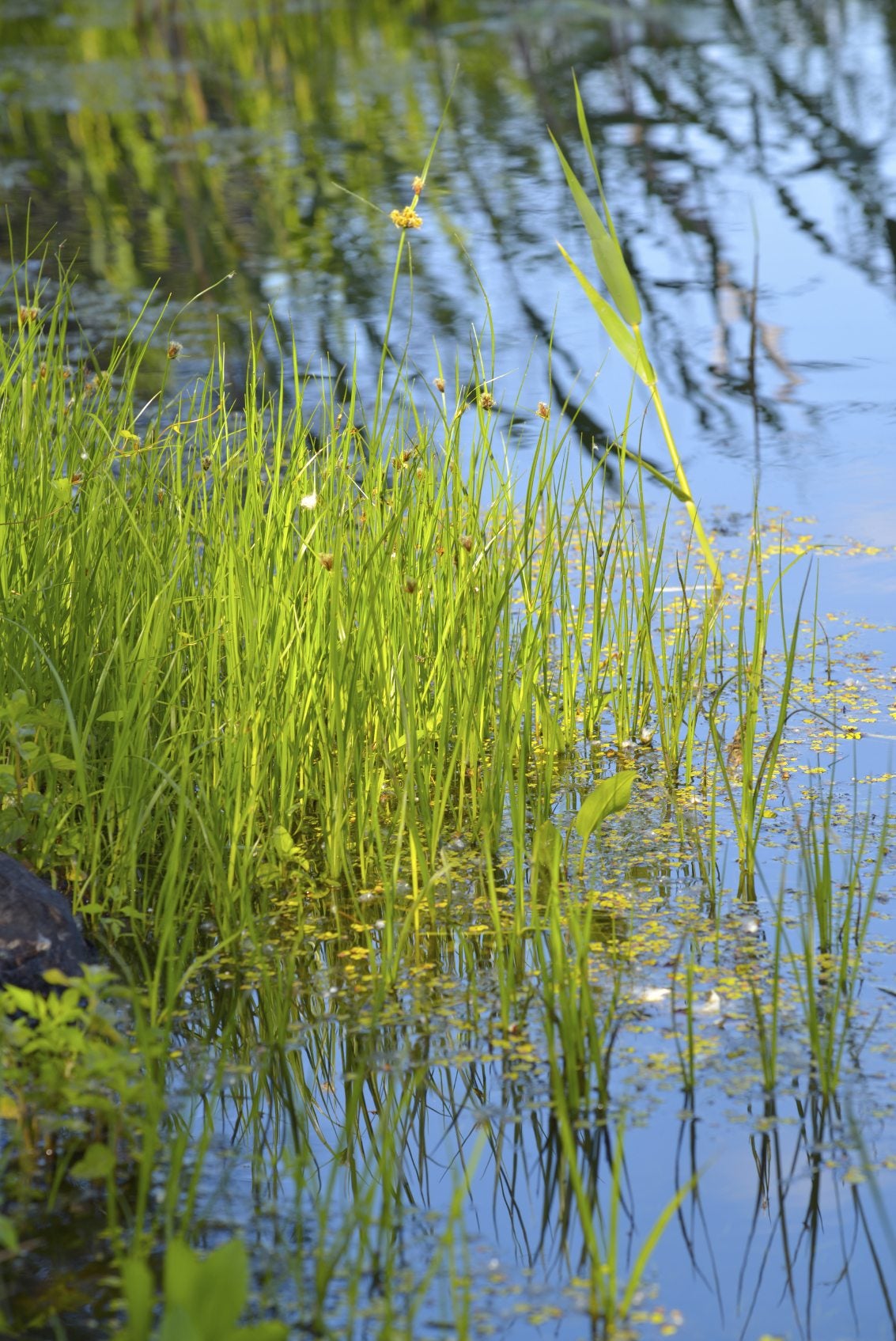Bulrush Plant Facts: Learn About Bulrush Control In Ponds


Bulrushes are water loving plants which create excellent habitats for wild birds, trap beneficial bacteria in their tangled root system, and provide nesting cover for bass and bluegill. They have an architectural beauty all their own and recall the biblical story of Moses, the child cast out onto the river amongst the bulrushes. In spite of all these charming details, the plant can become an invasive nuisance and foul up boat motors, clog water ways, and choke out other plants. It is also protected in many states, so it is important to know how to kill bulrushes without harming natural habitat and wildlife.
Bulrush Plant Facts
Most nature lovers can recognize bulrush. Bulrushes are sedges which colonize ponds, lakes, and riparian areas. There are both hardstem and softstem varieties. Both are important parts of aquatic diversity and are commonly found in North America. Occasionally, these plants can inundate an area and because they have low forage potential, are considered undesirable in flooded plains and meadows. The Department of Natural Resources only allows removal of bulrush plant weeds in small areas to gain access to lakes or streams and has particular rules on how this can be accomplished. Bulrushes can grow in 3 to 5 feet (1-1.5 m.) of water, or they can thrive as riparian species on the edges of moist habitats. These sedges can also survive brief periods of drought and cold temperatures. They grow from both seed and stem or root fragments, either of which can spread rapidly downstream and colonize all parts of a waterway. Bulrush plant weeds can grow 5 to 10 feet (1.5-3 m.) tall and survive in marshes, bogs, sand, or gravel bars. Hardstem bulrush grows in firm, sandy soil while softstem requires thick, soft silt in which to live. Bulrush has an appearance of a hard tubular or triangular stem with slender leaves. For survivalists, one of the more intriguing bulrush plant facts is its edibility. The stems and shoots are eaten raw or cooked and the roots and unripe flowers are boiled. Rhizomes may also be dried and pounded into flour.
Why Do We Need Control of Bulrush?
Hardstem bulrush is native to western North America and should not be culled in its native habitat except for small areas to open waterways. Softstem is native to Eurasia, Australia, New Zealand, and some parts of North America. It may tend to become more invasive in certain types of soil and can even survive brackish water. Bulrush control in ponds may become necessary to keep it open for livestock or for irrigation needs. In small lakes, bulrush may close off boat routes and create problems for engines. The plant’s ease of spread may also be of concern as it edges out other wanted native species. Control of bulrush is restricted in most states, and it is threatened in Connecticut and endangered in Pennsylvania. Check with your state Department of Natural Resources for the plant's status and recommended removal tips.
How to Kill Bulrush
In managed waterways, bulrush is controlled by regulating the water levels. Higher levels promote established plants, while lowering the water can result in bulrush reduction. This can lead to other plants establishing in their absence, such as cattails, which may be less desired species. In areas where reduction of the plant is necessary, aquatic registered herbicides are recommended. These must be used with caution and all application instructions followed to prevent harming wildlife. Once you have an adequate amount of population reduction in the area, cutting under the surface of the water will provide bulrush control in ponds and smaller water bodies.
Sign up for the Gardening Know How newsletter today and receive a free copy of our e-book "How to Grow Delicious Tomatoes".

Bonnie Grant is a professional landscaper with a Certification in Urban Gardening. She has been gardening and writing for 15 years. A former professional chef, she has a passion for edible landscaping.